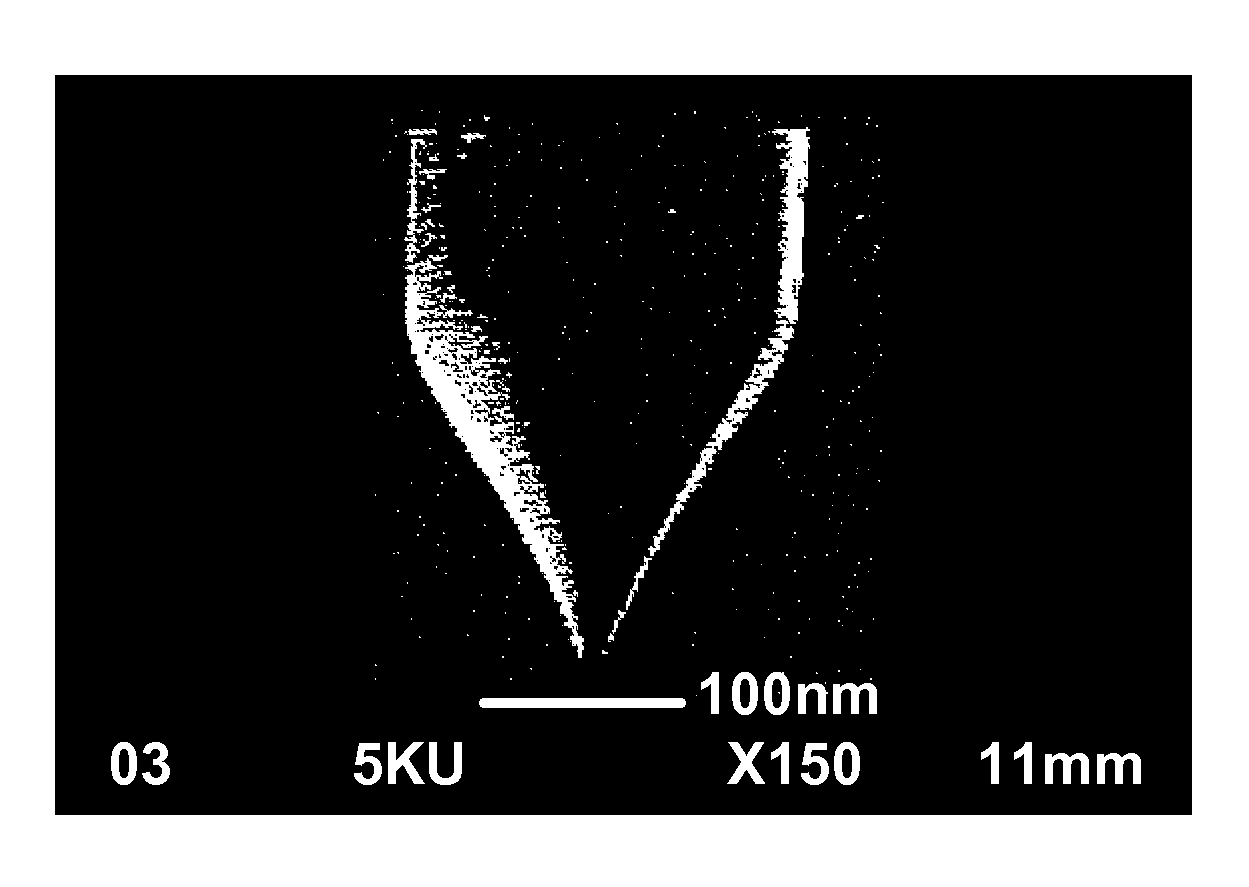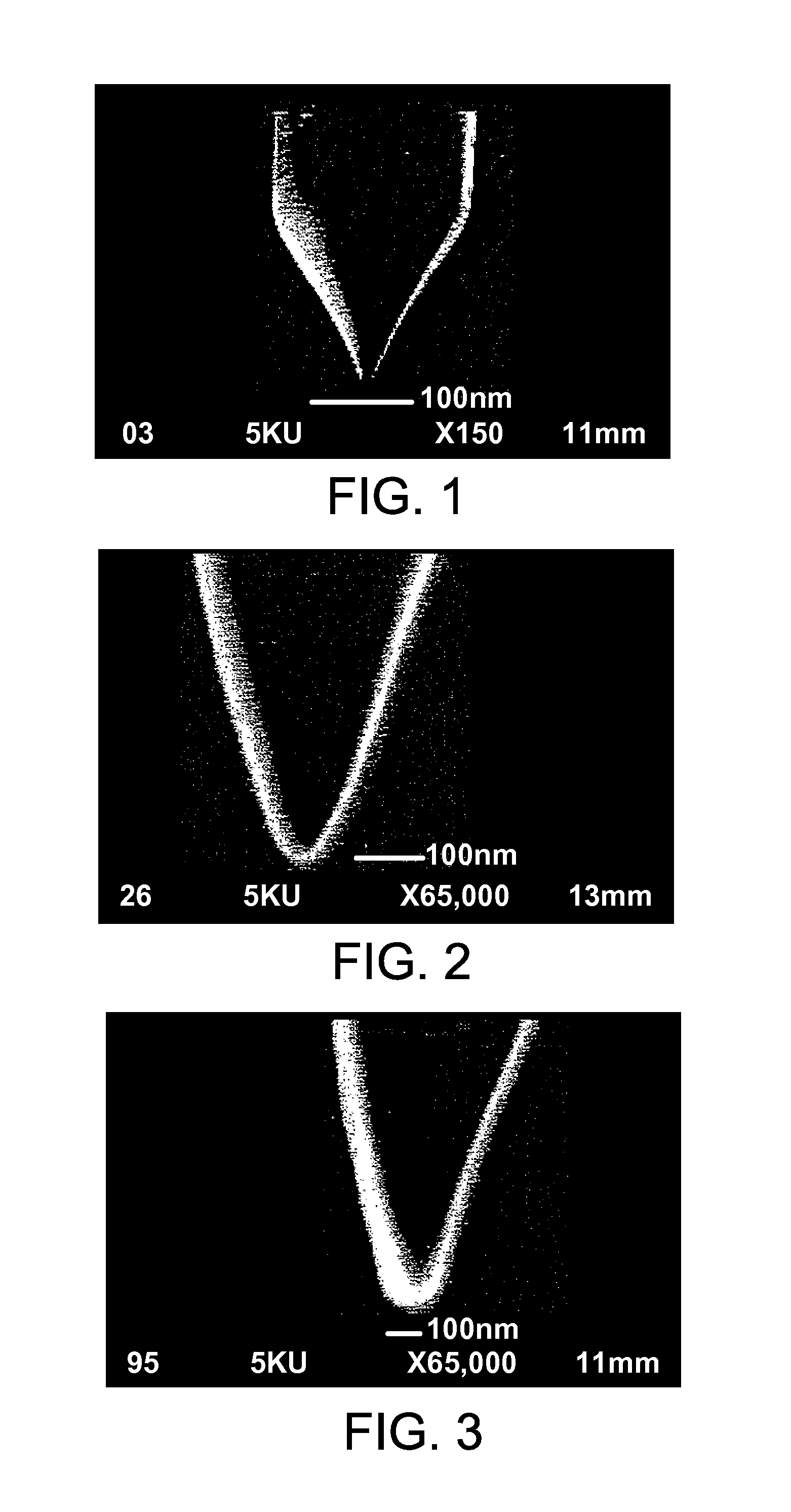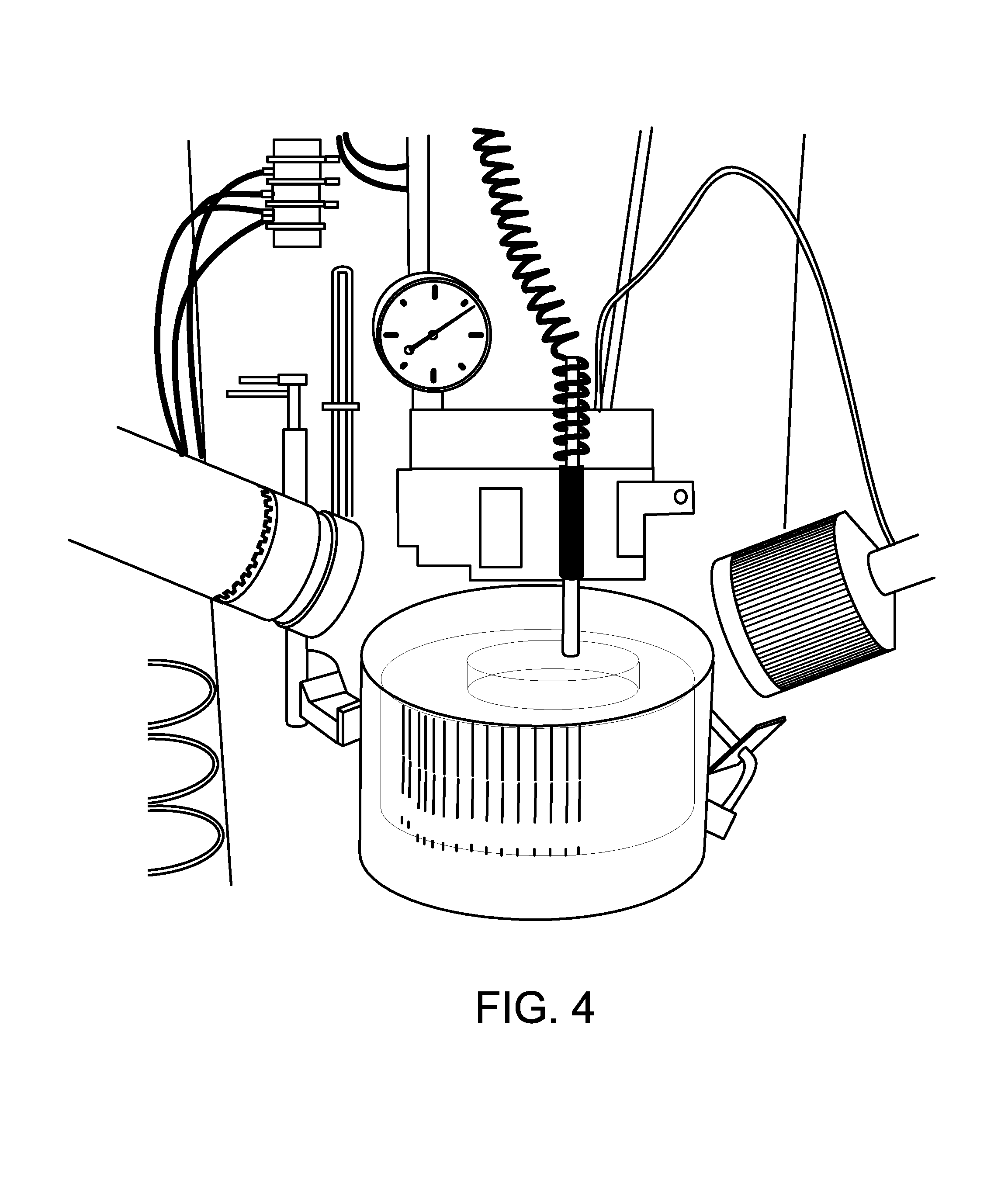Atomic level ion source and method of manufacture and operation
a technology manufacturing method, applied in the field of atomic level ion source, can solve the problems of group failure to produce reliable recipe for stable and repeatable commercial operation, and achieve the effect of long-term performance and reliability
- Summary
- Abstract
- Description
- Claims
- Application Information
AI Technical Summary
Benefits of technology
Problems solved by technology
Method used
Image
Examples
Embodiment Construction
[0020]An ion source tip according to the invention is shown in FIG. 1. FIG. 1 is a scanning electron microscope photomicrograph at 150×. The tip is made of single crystal tungsten. As shown, the tip is substantially conical with a cone angle of approximately 30°. FIG. 2 is a photomicrograph at approximately 65,000× magnification showing that the tip radius of curvature is in the range of 50–100 nanometers and more preferably is in the range of 75–100 nanometers. Importantly, the tip should be substantially rotationally symmetric so that views of the tip rotated 90° on a longitudinal axis would show no more than 1:1.5 asymmetries when the views are compared with one another. A cone angle of approximately 30° provides a desired cone length. The resulting short cone length is preferred since the tip will be more robust. A longer and narrower tip geometry than shown in FIG. 1 will be prone to damage more readily from physical shock, electrical arcs and / or high electric field strengths. ...
PUM
 Login to View More
Login to View More Abstract
Description
Claims
Application Information
 Login to View More
Login to View More - R&D
- Intellectual Property
- Life Sciences
- Materials
- Tech Scout
- Unparalleled Data Quality
- Higher Quality Content
- 60% Fewer Hallucinations
Browse by: Latest US Patents, China's latest patents, Technical Efficacy Thesaurus, Application Domain, Technology Topic, Popular Technical Reports.
© 2025 PatSnap. All rights reserved.Legal|Privacy policy|Modern Slavery Act Transparency Statement|Sitemap|About US| Contact US: help@patsnap.com



